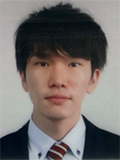Newsletter 2023.10 Index
Theme : "AJK FED 2023"
|
Order within turbulence
Abstract
 Susumu GOTO,  Yutaro MOTOORI Osaka University |
Order exists within turbulent flows. Conducting direct numerical simulations, we recently showed that developed turbulence at high Reynolds numbers is composed of a hierarchy of coherent tubular vortices. In this newsletter, we demonstrate this picture using visualizations of coherent vortical structures on different scales in (i) turbulence in a periodic box, (ii) turbulent wake behind a circular cylinder, and (iii) turbulent channel flow.
Here, we emphasize that we cannot capture the hierarchy of vortices on different scales by simply using a quantity related to the velocity gradient tensor, such as the vorticity magnitude (and enstrophy) or the second invariant of the tensor. This is because these quantities are determined by the smallest-scale structures. In fact, if we use these quantities to identify vortices in turbulence, we always observe a forest of worm-like fine tubular vortices.
Therefore, we need a scale decomposition to observe the hierarchy of vortices. By employing a band-pass filter of Fourier modes for the periodic turbulence and a combination of the Gaussian filters in real space for the other turbulent flows, we can identify coherent vortices at a given scale. Then, observing the identified hierarchy of coherent vortices on different scales, it is not difficult to describe their sustaining mechanism, which must be related to the physical mechanism of the energy cascade. Tubular vortices on the same scale tend to form counter-rotating pairs. Since such a pair of vortices is accompanied by a straining field around them, smaller-scale vortices are stretched and amplified there.
We also emphasize that the hierarchy of coherent vortices is useful for describing the various turbulent transport phenomena.
Key words
Turbulence, Coherent Structures, Vortices, Transport Phenomena
Figures

(a-c) Forest of fine-scale vortices identified by the magnitude of vorticity or the second invariant of the velocity gradient tensor.
(d-f) Hierarchy of coherent vortices identified by scale-decomposed fields:
Red, the largest vortices; yellow, intermediate-scale vortices; blue, small-scale vortices. (a, d) Turbulence in a periodic cube, (b, e) turbulent wake behind a cylinder, and (c, f) turbulent channel flow.

